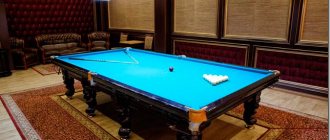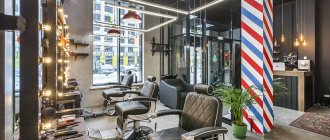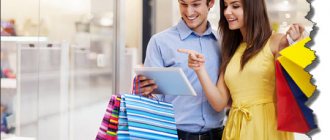Despite the hackneyed opinion, shoes play the role of “second fiddle” after clothes. Along with hats and accessories, this part of the wardrobe perfectly emphasizes the advantages of its owner and effectively complements the entire image as a whole. It becomes a favorite item that can be worn at any time of the day and worn with pleasure. In order to update it, we often pay attention to bright posters and signs. One shoe advertisement seduces us, while another does not evoke any emotions. What is this connected with? What methods and methods do advertisers use to attract buyers? And how effective are they?
What are the challenges of shoe PR?
Unlike PR for other types of products, shoe advertising is associated with a number of difficulties. Creative and marketing agencies in particular often face a single problem. By and large, they have to rack their brains a lot about how to make a small detail noticeable to the consumer. And here a number of options appear, for example, in advertising you can use the image of people wearing these same shoes.
However, such a photo must be presented in such a way that buyers’ attention is not shifted in favor of the person, but is addressed exclusively to the shoes. What are the ways to achieve this?
Outdoor advertising
Billboards
Billboards are a good tool for promoting a shoe store. However, remember, if you are opening your first retail outlet and cannot afford to install billboards throughout the city, it is better to abandon this method in favor of less expensive options. Before deciding to place a billboard, think about whether this measure is really appropriate in your particular case.
Banners
Signposts
Not all shoe stores use pillars as an additional advertising tool. If the store is clearly visible and large enough (for example, it occupies a large separate building), the sign may simply not correspond to the scale of the room, which in itself attracts more attention. However, if your shoe store is located in a shopping center, it will definitely not be superfluous. In this case, it will act as a pointer, which is sometimes necessary in such complexes.
Advertising in elevators
Often, on the advice of marketers, shoe store owners place advertisements in the elevators of buildings in nearby areas. This method of promotion can be effective if your flyer is bright and stands out from the rest. Moreover, the offer or promotion described on it must be truly thoughtful and attractive, otherwise there will be no effect from such advertising.
Lightbox
Illuminated billboards near the store perfectly attract the attention of customers at any time of the day. That is why, if your budget allows for such expenses, order this design. This is especially true if your store sells expensive shoes.
Shifting the focus to the legs
One of the most common techniques that can be observed in shoe advertising is the partial elimination of a direct competitor for the attention of viewers - a person. At the same time, the models themselves posing on the covers are not completely removed. All that remains of them are their feet, shod in the advertised shoes. The main feature of such PR is the bright background and details accompanying the image.
Depending on the plot of the video or photo shoot, they can simply walk down the street, look out of an elevator or car, or open doors. In a word, such shoe advertising not only places the necessary accents, but also forces the viewer to mentally complete the figure of the owner or owner of these very feet. And in this case, no one ever limits the flight of fantasy.
Where to start shoe production
Business idea and market survey in this area. For example, you need to analyze your competitors and clearly understand what your advantage will be.
- Formation of a goal - will it be a real desire to produce a quality product or a thirst for large profits.
- Determining the specifics of the business and its specialization. A clear vision of the direction of your activities is important here. The fact is that in order to increase competitiveness, it is important to understand what exactly the feature will be, and for this it is necessary to provide for all options for the development of events.
- A business plan that calculates real costs and forecasts potential profits, calculates all kinds of risks, resolves issues with the sanitary station and other services. Opening and registration of a legal entity.
After going through all these stages, you can proceed directly to opening your own business, which will require certain aspects: renting premises, purchasing equipment, all necessary materials, advertising costs, and so on.
Intentionally increasing the size of the details
The second, in our opinion, interesting technique used by advertisers is to deliberately increase details. For example, an advertisement for children's shoes will definitely attract a buyer if the photo shows a baby wearing huge boots, shoes or sandals. According to marketers, increasing details, even in violation of all existing laws of proportion, allows you to make a competent emphasis. Moreover, in this case, the many times enlarged shoe immediately becomes more noticeable against the general background.
Withdrawal from circulation
When we put the remaining balances into circulation with simplified codes, is there any deadline for selling these remaining balances?
— Earlier regulations stated that products with simplified labeling codes could only be sold for two years. The latest decree No. 860 does not set this period; you can sell products with simplified codes for an unlimited time.
If I received a marked product and did not accept it through the system, can I sell it?
— Yes, you can sell such a product before March 1, 2020, because before this date, the withdrawal of labeled goods from circulation through the cash register is not mandatory. If you did not manage to sell the marked products by March 1, you need to notify Honest Sign that you are the owner of this product. The regulator has not yet explained how to do this.
How will the marriage be written off?
— In the write-off act, you will need to indicate all the codes of the goods that are being withdrawn from circulation by write-off.
Putting shoes in the foreground
Advertising for men's shoes also looks interesting. Especially when it comes to the fore. And if you believe the law of fine art, then all the details in the foreground become the main source of attention. For example, this is exactly what the Swiss advertisers from Jung von Matt/Limmat did. During a photo shoot with models and the new collection of Max Shoes shoes, they left only the girls' heads and shoes in the frame. At the same time, everything was played out as if the shoes acted as an open mouth. It turned out to be a very memorable and creative spectacle.
"Silent revolution" in the footwear market
“Until now, a huge number of individual entrepreneurs working in the footwear market, especially in the regions, are not aware that a revolution has taken place in their business,” notes Alexey Chernyshev, commercial director of the logistics company AKFA. At the same time, AKFA, being one of the leading importers of footwear products, is meeting the key year 2020 for the footwear market fully armed. Shoes Report spoke with Alexey Chernyshev about the new AKFA software product for labeling shoes in production, interaction with the operator of the TsRPT labeling system and the market’s readiness for new rules.
Alexey Chernyshev is
the commercial director of AKFA.
Shoes Report: Alexey, we talked to you a year ago on the topic of preparing companies for the process of marking shoes, then the whole system was just beginning to function in test mode - it was already possible to generate a code, but it was not yet possible to transfer it to customs and register it. How are things going now?
Alexey Chernyshev:
You won’t believe it, but from the point of view of customs nothing has changed, everything is as it is. For customs now the marking code is like in Fonvizin’s “Nedorosl” “the door is an adjective...” That is, there is a marking, but it does not fulfill its control functions. Today, marking codes can be entered exclusively in text form into the customs declaration. But the main thing is that releasing a product into free circulation with a marking code does not mean automatically putting it into circulation.
At the moment, as of November, marking codes are entered not automatically, but manually. The reverse algorithm works - first you clear the goods through customs, then you put them into circulation in the client’s account, indicating the customs declaration number. And it should be like this - I cleared the goods through customs, the customs released it for free circulation, that is, it was automatically transferred to the CRPT database and put into circulation.
In what future will all this work as it should?
Well, as usual, “tomorrow”.
That is, the testing stage of marking is currently ongoing?
Nothing like this. This is not a test phase at all. Because the money is already being taken. We ourselves already pay for the marking codes, 60 kopecks per code, and we’ve already paid a lot of money. Now there is a transition period when both marked and unmarked shoes are imported into the country. The circulation of both is allowed, but this situation will most likely last until April.
It turns out that those who have already mastered marking prefer to pay these 60 kopecks?
I can't speak for everyone, but we pay. We order codes for our clients and pay for the codes. But this only lasts a month. That is, this is the latest design.
Do I understand correctly that if possible, it is better to label now, because there will be no need to label leftovers later?
I would not agree with this, because the labeling of residues has been simplified to the point of impossibility. By and large, it will be very simple to label leftovers when mandatory labeling begins. We also began to offer our customers a service for labeling residues. This objectively became easy to deal with.
It's probably good that it's easy? At least there won’t be any big problems for retail...
I think there won't be any problems. Unless, of course, some new by-laws come out.
The other side of the coin here could be that there will be loopholes to bypass the system? Maybe someone will be able to mark shoes without documents, for example?
In fact, if the scheme for marking residues remains as it is now, then this cannot even be called a “hole” in the system, it is just a “gate”! That is, using eight GTINs you can describe any shoe!
But maybe things will change?
Let's see.
I heard that you have developed your own It product for labeling, tell us more!
We have created an internal program for recording and labeling shoes that we transport. This is a very cool and useful thing that we decided to release to the external market. All that remains is to make it beautiful, that is, to make a design; functionally it works completely. The uniqueness of this software's competitive offering lies in the fact that it is installed by the manufacturer.
We reasoned this way: labeling shoes in other people’s warehouses is expensive, time consuming and, most importantly, there will be a huge number of errors. The only reasonable way to mark shoes is to apply them immediately at production. But to avoid any confusion, it should be possible at production to get a label for exactly the pair that appears before the eyes of the specialist who applies the code.
This is why we developed the software; it is located on a Chinese server, in Chinese, with Chinese technical support. It contains certain mnemonic rules for describing shoes that are understandable to the Chinese. We presented the software to three dozen suppliers in Beijing, and they really liked it. Now about 70 suppliers work on this software product and label shoes. This is not a boxed product, it is a network version that allows you to see the entire supply chain of shoes, all links - the manufacturer, the Chinese trading company, export, import, putting into circulation, transportation.
It turns out that you also offer your services for installing software in production?
Yes. We have opened an office in China, which is now dealing with all this. Quite a lot of companies that learned about our program from Chinese manufacturers approached us with a request to adapt it for third-party importers. We've already done this. In addition, we are now launching software not only in Chinese, but also in English and Turkish. Recently we installed the software at one of the Italian factories. And in China we are already actively developing this direction.
Have you started a separate business?
We could have a separate business if we sold this product. At the moment we do this free of charge for our suppliers.
That is, is this your competitive advantage as an importer?
Yes. Accordingly, in this program we are now also creating a module for labeling residues. I think that the special demand for our software will begin in February. But the most important thing is the labeling of clothes. The clothing market is even more complex than the footwear market. This program can also be used for labeling clothes.
You probably opened a new department for this task, expanded?
Yes, we are expanding now.
And how many more IT specialists have been added, for example?
There are now three times more of them than before.
I remember you said that in connection with labeling, all companies will need good IT specialists...
This has not changed, this is actually the case. If you enter the marking process yourself, you cannot do it without a serious IT specialist. Yes, ready-made solutions have appeared on the market today, including for 1C, but in order to integrate them into your own accounting, you need to put your head and hands to it. It won't work on its own. Another important point: many were waiting for a solution from 1C, believing that 1C would make the right product, and they wouldn’t have to do anything themselves - it’s not that simple! In fact, all updates in 1C will appear only in the newest versions. That is, if you are working on older versions of 1C, then there will be nothing labeled there.
Previously, there was talk in the market that foreigners do not all perceive the labeling, that Italians do not want to hear anything about it at all...
In this regard, little has changed. Many suppliers still perceive all this as some kind of Russian idea, and say, “figure it out yourself as you want!” On the other hand, recently at one of the shoe exhibitions I got into a conversation with one of our clients’ suppliers, a foreign manufacturer. He, as they say, breathed indignation, saying, “what a wild country, I’ve known for two years now that you have new rules here in 2020, and Russian clients come to me who have never even heard of it!” And we are not even talking about labeling, but about the abolition of UTII. Indeed, there are only two months left to submit an application to change the tax regime, and many individual entrepreneurs in the regions know nothing about it.
For many companies, wholesale and retail have different taxation systems and different legal entities. The abolition of UTII from 2021, and the abolition of UTII and Patents for shoemakers from 2020 in connection with labeling will force companies to fully maintain accounting, and they must be prepared for this, they must take some action.
Until now, a huge number of individual entrepreneurs working in the footwear market, especially in the regions, are not aware that a revolution has taken place in their business! They do not know that from January 1, 2021, they will not be able to sell shoes while on UTII, that already in December they must switch to another form of taxation and submit a corresponding application to the tax office. And those who know have not decided where they will go for VAT, 6% or 15%.
I'm afraid that with the onset of 2020, it may turn out that a large number of companies selling shoes will simply not switch to another form of taxation, they will start selling shoes, and something will have to happen that I don’t know...
There will probably be a collapse first, and then everything will somehow be resolved. Do you think the CRPT system is ready for mandatory labeling from February?
Yes, everything is fine there. At some point, it was quite difficult to get answers to many technical support questions from CRPT, and still not everything works like a charm. In October, a huge number of players fell on the CRPT, so he simply could not “digest” them. But now October is over, the situation has become radically better. And it would be a lie to say that nothing works for them.
Showing shoes on a “talking background”
Continuing the concept of “fashion model shoes,” let’s remember another secret of advertisers. Thus, they refuse to depict shod people and models and give preference to creating a “talking background” or using a form of homogeneous content. It’s like with a plate on which, for example, flax seeds lie. If you look at such a photo, then it is the plate or dish that attracts attention, but not the seeds themselves.
This technique was recently used in an advertisement for CaféNoir women's shoes. During the photo shoot, viewers saw an elegant shoe, inside of which there were beautiful rosebuds. At the same time, they were very well matched to the color of the shoes. By the way, flowers are also a talking symbol that can be easily deciphered by any person who has nothing to do with the creation of advertising. In particular, the rose symbolizes femininity, virginity and purity.
Changing demand structure
During a crisis, people choose cheaper shoes and abandon models that were purchased specifically for the holidays. A couple of years ago, many women bought boots with both high heels and solid soles for the fall-winter.
Now they buy one pair with a medium-sized heel in the expectation that such boots can be used both for everyday wear and on more formal occasions.
Colored shoes are no longer sold in the fall-winter collections. All this was reflected in the structure of the assortment. Shoe companies have abandoned colored shoes in their fall-winter collections. Now they are dominated by black color, universal, suitable for any clothes. Cheaper leathers are used in production, and the range has become simpler and cheaper. We can say that in terms of assortment we have returned to 2000-2005. But this only concerns the functionality of the shoes; the design, of course, has changed. You can abandon some materials that greatly increased the cost of shoes, but you cannot weaken your attention to design. With an old assortment, you will simply lose customers. A person will come in, see nothing new, and will no longer come to you. Trying to save money on developing new collections and selling stock leftovers from the warehouse will not lead to anything good. On the contrary, during a crisis it is necessary to pay much more attention to the assortment and be sure to update the collections every season. People with money become ten times more demanding during a crisis. Those shoe companies that take into account changing consumer preferences are doing well in the new conditions and are not reducing sales.
The importance of details and simple movements
Another technique is often used by the creators of sports shoe advertising. As a rule, their characters and models are captured in motion. Also, people in the photo may make some kind of gesture or movement of their feet to attract attention. For example, some models cross their legs in advertising. They can be carried in the arms of a man. They can tie their shoelaces, kick a ball, and even bite their heels, as often shown in posters of high-end women's shoes.
In advertising for sneakers, girls or boys jump high and are captured in flight. In a word, when creating such videos or photos, attention is paid to actions or movements. In this case, the emphasis shifts to the shoes, and not to the person depicted.
Business plan for a shoe store - point by point
If you want to create a competitive shoe store, you need to be prepared to invest a considerable amount of money into the business. We are talking about 1.0 - 1.5 million rubles just for creating the assortment and design of the outlet. The “golden years” of the 90s, when the business grew from selling 20 pairs of shoes, are long gone.
As in any business, there are certain risks: poor location, lack of buyers, error in selecting the store’s assortment, high competition, opening outside the sales season, and so on. All this hits a novice entrepreneur very hard and discourages any desire to do business.
You can reduce the risk of losing funds at the start of a project by purchasing a franchise. Fortunately, today there are plenty of companies offering to work under their brand. The advantage of working under a franchise is obvious. The entrepreneur does not need to think about the design of the outlet, assortment, equipment, or train staff - the franchise company does everything for him. A businessman buys a business that is already ready and established in practice, generating income for its owner.
The downside of such cooperation is the lack of complete business freedom, which many entrepreneurs pursue. Any deviation from the franchisor's rules may result in deprivation of rights to the franchise.
However, if you decide to master the difficult path of the “shoe business” on your own, you need to start by drawing up a clear plan of action - from searching for investments to choosing suppliers of goods.
Highlighting details with color
Alternatively, many photographers try to shade or put the human figure into shadow. In contrast to such a blurry picture, they display shoes that are highlighted in bright colors. In some cases, the emphasis shifts by covering the upper part of the model’s body and highlighting the lower part. For example, in an advertisement for TM Marco Tozzi shoes, the upper part of the photograph, where the model’s head, legs and torso are located, are highlighted in gray.
Moreover, bright letters and inscriptions appear on top of the picture, which practically cover the entire model. Only the head and legs remain visible. Shoes stand out with the help of bright colors or lighting, matching the palette with the letters in the photo. Such advertising looks impressive and makes you pay attention to the shoes, and not to the female models themselves.
Who does the requirement apply to, what shoes are subject to labeling?
Which authorities are authorized to control whether shoes are marked or not? If raw materials are purchased from third-party suppliers, and the studio provides services for sewing dance shoes, is such a product not labeled?
— The Government of the Russian Federation and the Ministry of Industry and Trade are authorized to introduce labeling. In the “Honest Sign” system, the Ministry of Industry and Trade, the Federal Tax Service, Rospotrebnadzor and other government organizations can monitor the movement of goods. If you produce shoes in limited quantities based on an agreement with the customer, then you do not need to label such shoes.
Are therapeutic orthopedic shoes subject to labeling?
— No, orthopedic shoes are included in the exceptions; they are not subject to labeling rules. The list of OKPD2 shoes subject to labeling is in the Decree of the Government of the Russian Federation dated July 5, 2019 No. 860. The exception is stated in the Unified Customs Tariff of the Eurasian Economic Union.
Should trade on the market be marked?
— Yes, the labeling requirements also apply to trading on the market. We recommend selling out unlabeled stock before March 1st so you don't have to label it yourself. This is realistic if your supplies are not too large.
Our studio sews shoes under a contract for an orphanage. Payment goes to the bank account. Do we need to label shoes?
— If there is an agreement with the customer on the provision of shoe manufacturing services, then there is no need to label the shoes made by your studio. If there is no agreement, then you are required to label the shoes you produced.
The conditions for marking are as follows:
- You need to mark if you have entered into a production agreement from your own or customer-supplied raw materials.
- There is no need to label if an individual sells to a store products that he himself produced (the store labels, not the individual), and also if you have entered into a service agreement with a client.
We do not sell products at retail, we ship wholesale. What to do?
— Both wholesalers and retailers need to label their warehouse balances by March 1, 2020. From the same date, everyone is required to generate universal transfer documents (UTD) for goods, indicating marking codes in the documents. You will also need to sign incoming UPDs from your suppliers using CEP.
I am an individual entrepreneur, I run a small retail store, I buy goods from a simple market. People work there even without contracts and have never heard of labeling. What should we do if after March 1 the goods are not labeled there? Can we purchase it and label it ourselves through “Honest Sign”?
— From March 1, 2020, market sellers will be required to sell only labeled shoes. If they sell you an unlabeled product and you buy it for resale, this will be a violation for both parties to the transaction.
Are shoes that an individual entrepreneur produces for retail and for individual orders subject to labeling?
— The type of contract and method of production are important. If you manufacture shoes under a contract from your own or customer-supplied raw materials, then such goods must be marked. If you provide tailoring services, the finished products are not marked.
Are shoes subject to labeling when sold in a funeral salon: slippers, women's shoes, men's shoes made of leatherette and textiles?
— Yes, these shoes are also subject to marking. This does not depend on the material from which the shoes are made.
Using the opposition effect
In advertising of women's, men's or children's shoes, the rule of opposition is often used. For example, some shoe store advertisements use shod mannequins. In this case, mannequins are inanimate objects. And shoes, boots and sandals are created for living people. This is the opposition.
Some sports shoe manufacturers remove sneakers or sneakers against a background of water or fire. For example, in the photo you can see only legs running on water, and a fire is burning in front. This is also a opposition between two elements.
In a word, everyone who has ever watched a video or photo of shoes probably paid attention to exactly those objects that were intended by advertisers. So many of us didn’t even suspect that we were looking at this or that picture only because all the necessary accents were correctly placed on it.
Shoe ad headline
The most important thing, along with high-quality illustration. The purpose of the headline is to make you read the first sentence of the advertising text for a men's, women's or children's clothing store. No more, no less.
Close attention should be paid to the length of the title. For what? Because customers will come to the shoe store from a search. On average, out of 10 people who read a headline, only 1 clicks on the content.
In Google and Yandex searches, the results display from 48 to 62 characters with spaces
. On social networks and message boards, the numbers are slightly different. Make sure that the buyer can read the most important things without clicking on the title!
If the title turns out to be longer, it doesn’t matter. The main thing is that the most valuable information is contained in the first 50 characters. In these few words you need to fit the key advantages, as well as important keywords for promotion in search.
Buy women's sneakers wholesale 425 rubles - retail from 637 rubles [the key advantage is indicated - price, the target audience is determined - women]
Branded shoes in Moscow - More than 35,000 models from Italy [location indicated - Moscow, key advantage - large selection]
Fines and other sanctions
If you don’t register with Honest Sign, who will check it?
— Without registration in the “Honest Mark” it is impossible to fulfill any requirement for the circulation of labeled products. Let's imagine this situation. You haven't registered, but you're selling shoes. The Federal Tax Service sees fiscal data from your cash register, which confirms the sale of shoes. A tax officer can log into the Honest Sign cloud system and check whether your organization is registered in the system. If not, you can be fined for violating the procedure for using cash register systems; individual entrepreneurs will be fined 1.5-3 thousand rubles, and legal entities will be fined 5-10 thousand rubles. (clause 4 of article 14.5 of the Code of Administrative Offenses of the Russian Federation).
Do we need to register in the labeling system if we purchase slippers and safety footwear for internal consumption (slippers in sanatorium rooms)?
— If you buy shoes for consumption and not for resale, then you do not need to register and you also do not need to comply with other labeling requirements. If you purchase shoes for subsequent resale, for example, to clients of your sanatorium, then you need to register with the “Honest Sign” and fulfill other requirements
— If you buy shoes as an individual, then you do not need to register with the “Honest Mark” and fulfill other labeling requirements.
If you purchase shoes as a legal entity or individual entrepreneur, but without the purpose of resell them, you only need to register with the “Honest Sign” and confirm receipt of the goods by signing the UPD using the CEP (clause 84 of the Decree of the Government of the Russian Federation of July 5, 2019 No. 860).
Will there be any penalties for the end buyer when purchasing unmarked shoes?
— No, fines will not be for the final buyer (individual), but for the seller. Improper use of cash register equipment may result in a warning or a fine. For individual entrepreneurs it will be 1.5-3 thousand rubles, for legal entities 5-10 thousand rubles. (clause 4 of article 14.5 of the Code of Administrative Offenses of the Russian Federation).
Shoe processing
If, nevertheless, there is an objective need to use shoes that have already been used, they must be treated with a special solution before use.
At home, it is recommended to use an aqueous solution of vinegar essence for this purpose (it must be prepared in the ratio: 1 part vinegar essence to 2 parts water).
You can also use 1% chlorhexidine digluconate (gibitan), which is sold in pharmacies. It is necessary to wipe the inside of the shoe with this solution, then wrap it in a plastic bag and leave for 3-4 hours. Then the shoes need to be taken out of the bag and aired on the balcony. After this, you can safely wear such products without fear of skin diseases.
Advice! Another disinfection option is to treat the inner surface of the products with 25% formaldehyde, and then wipe with ammonia.
When you have to wear slippers or shoes that have been repeatedly used by other people while visiting or in public institutions, you must immediately treat your feet at home to disinfect them. To do this, they should be thoroughly wiped with boric alcohol or table vinegar diluted in half with water.











